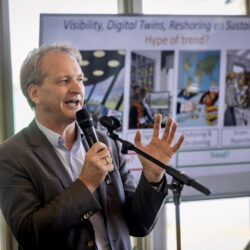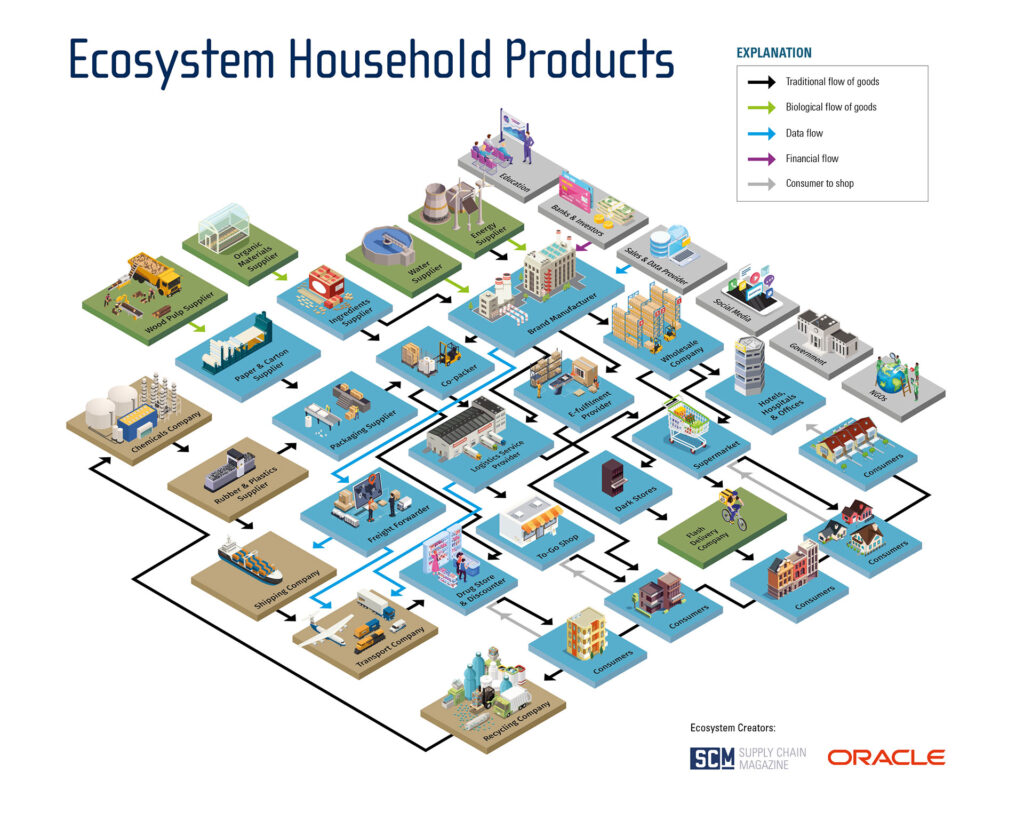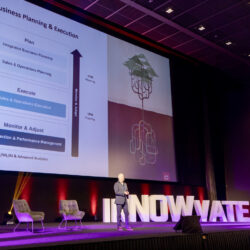SCM Trend Dinner 2022: Visualize your ecosystem

From possible gas rationing to rising staff shortages, threats to supply chains are increasingly coming from unexpected quarters. During the SCM Trend Dinner, Martijn Lofvers, Chief Trendwatcher at Supply Chain Media, urged companies to visualize the ecosystem in which they operate. “Today, it’s no longer just supply chains competing with each other, but entire ecosystems.”
By Marcel te Lindert
Just after the Supply Chain Trend Dinner in Utrecht on Thursday 1 September, the news broke that Damco Aldel’s aluminium plant in Delfzijl was shutting down indefinitely due to the high energy prices. Earlier in the day, zinc producer Nyrstar had put its Budel facility on care and maintenance for the exact same reason. Both developments illustrate that traditional linear supply chain thinking fails to address all business risks nowadays. Today’s supply chain directors must learn to look beyond their customers and suppliers.
Martijn Lofvers, Chief Trendwatcher at Supply Chain Media, echoed this sentiment at the start of the dinner, when he urged the attendees to think in terms of ecosystems. “For a long time now, we have been saying that it’s not companies that compete with each other, but supply chains. But now it’s ecosystems competing with each other. Just think of the carmakers in India who had to cease production during the pandemic because Tata Steel couldn’t supply them with aluminium. That was due to a shortage of oxygen, because all the available oxygen in India went to the hospitals treating COVID-19 patients. So suddenly, the automotive industry was competing with hospitals.”
Ripple effects
Lofvers showed the supply chain directors how everything was interconnected: the coronavirus outbreak, the lockdowns in Europe and China, rising transportation costs, severe material shortages and the unexpectedly high growth of e-commerce followed by a drop in sales. Likewise, the war in Ukraine is linked to the rising energy prices and the sky-high inflation that is causing so much economic pressure. “We’re seeing all kinds of ripple effects that amplify one another. And that’s not to mention the geopolitical friction with China, which will also have a major impact.”
A lot can be learned from how the military deals with this. NATO had modelled and played out all possible scenarios for a Russian invasion of Ukraine last autumn, long before the invasion actually took place on 24 February this year. “Former Dutch Lieutenant-General Mart de Kruif recently said that militaries can change their strategic, tactical and operational plans in less than a month. Companies must learn to adapt their supply chains faster, too – but they won’t be able to if they stick to their annual budget rounds.”
Visualization
Ecosystem thinking offers greater insight into all the interrelationships. It’s no coincidence that Europe’s top four supply chain executives talked about the importance of ecosystems during the inNOWvate Supply Chain Event earlier this year, and reports by consultants and analysts also increasingly mention supply chain ecosystems and business ecosystems. Lofvers: “But those are just words. You won’t find any images on the internet of how such an ecosystem looks. So my advice is to map out your own ecosystem.”
Supply Chain Media and Oracle have already set a good example by visualizing the ecosystem for household products (see image). The organizations shown in blue are the primary flows towards customers and suppliers; the brown ones are the secondary support flows, including logistics service providers and contract packers, among others. Grey indicates tertiary partners such as governments, knowledge institutions and non-governmental organizations. “You can do this exercise for any ecosystem. Just visualize it. It gives you greater insight, plus it helps you explain to your colleagues what is going on and what needs to be done,” stated Lofvers.











